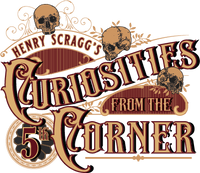
This unassuming grave, tucked away in St. Margaret's Church in Rattlinghope, England is the final resting place of Richard Munslow, a local farmer and the last sin-eater, who died in 1906. The practice of sin-eating was generally undertaken by beggars, the poor and other social outcasts. These individuals would "pawn their souls", meaning they would be paid to eat and drink over a corpse, to take the sins of the suddenly deceased who had not been able to confess their sins and/or receive last orders before death. In some areas, it was believed that this ritual would ensure the deceased would be able to have safe, untroubled passage into Heaven. Sin-eaters were also said to be able to prevent the sin-ridden dead from returning to the land of the living in the form of ghosts or spirits, and because of this apparent ability, they were generally shunned by locals due to their association with evil spirits and witchcraft and were only summoned when there was a need for their services, and to look a sin eater in the eye was considered incredibly bad luck. Unusually, in the case of Richard Munslow, he was a well-to-do farmer of good social standing, rather than an outcast. Its thought that it was the tragic death of four of his children at very early ages, heartbreakingly, three of whom died of Scarlet Fever within one week in May of 1870, may be the reason he resurrected the ritual of sin-eating.

Although sin-eating is thought to be an ancient practice, with anthropological studies linking it's origins with the beginning of Christianity. As we were probably all told at some point in school, Jesus Christ, according to the Bible, willingly sacrificed his life to rid humanity of it's sins and therefore served as a role model to the original sin-eaters, who offered their souls to purify the souls of the recently deceased. As early as the 1680s these morbid local feasts were written of as an “old Custom at funerals,” with the practice going into decline in the 19th century and being particularly popular in the Welsh Marches and border counties - what can I say... We're a sinful bunch around here, and damn proud of it.
During the act of sin-eating, the sin eater would sit next to the deceased, facing the door and be given a wooden plate with bread, and a bowl of ale. Surrounded by the deceased's family and friends, who would be mourning with ale in hand, the sin-eater would place the bread, some say on the head, some the chest - others both of the dead, where it was believed this would absorb the sins of the departed, this was then eaten by the sin-eater, washed down with the ale, meaning they had absorbed the dead's sins into their own soul, and legend has it, they would then recite the following "I give easement and rest now to thee, dear man. Come not down the lanes or in our meadows. And for thy peace I pawn my own soul. Amen." before standing and taking his leave. It is said that after, the wooden platter used to serve the food to the sin-eater would be burned by the superstitious mourners.

Sin-eating was a dangerous game for many reasons. Firstly, the perceived spiritual consequences. People of the time were more often than not incredibly religious and God fearing, so by taking on the sins of the dead they were in turn corrupting their own soul, and were seen as becoming 'more evil and corrupt' with every eating. Given the beliefs at the time, it's heartbreaking to think individuals struggled so much for money, they would conduct this ritual despite knowing they would give up their position in a paradise like afterlife, a belief that was all to real then, for a few pennies and a bit of bread and ale. Not only were the spiritual repercussions terrifying to those at the time, the real life threat of the clergy was another. Since the Catholic Church had a monopoly on the absolution of sins and the members of the clergy were the only people allowed to perform absolution rituals, sin-eating was outlawed and punishable by death, which to me seems incredibly counter productive - thou shalt not kill after all.
Not only the Sin-eaters themselves who conducted the ritual, but also those who employed their services to try and give absolution to their loved ones were seen as heretics, blasphemers, and worshippers of Satan.
Personally, this doesn't quite make sense to me, as surely trying to grant someone you love passage into Heaven, so they may be with the God they believed so wholeheartedly in doesn't quite link with worshipping Satan, but the church throughout history has never really liked anyone stepping on its toes, so I guess it's easier to denounce something as heresy than have jobs of absolution taken away from priests. However, due to this and the possibility of being put to death sin-eaters were usually forced to keep their business shrouded in a veil of secrecy. This coupled with being a social outcast must of been a very unenviable and lonely job.
You can visit Richard Munslow's grave, which also memorialises the deaths of his 4 children in the church yard, and with it being in Rattlinghope there's some lovely scenery about and an excellent pub called The Bridges with possibly my favorite beer garden in Shropshire at the back of the pub (it even has its own little stream bubbling away) and serves some cracking local ale from the nearby Three Tunns Brewery, for that real sin-eater experience.

